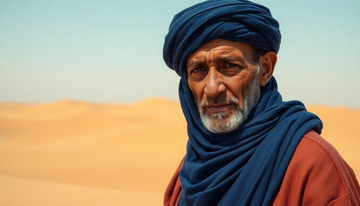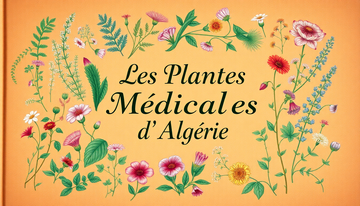The Berber Customs of Algeria: A Millenary Heritage
Introduction
The Berber customs in Algeria represent a rich and fascinating cultural heritage, rooted in ancestral traditions that date back thousands of years. Often little known outside Amazigh communities, this heritage is deeply embedded in Algerian identity and plays a crucial role in preserving the country's cultural diversity.
In this article, we will delve into these age-old traditions, exploring their origins, evolution, and influence on the daily lives of Algeria's Berbers. We will uncover the richness of their language, craftsmanship, festivals, and ceremonies, as well as the diversity of the tribes that make up this deeply rooted people.
The Origins and History of the Berbers in Algeria
The Berbers, also known as Amazighs, are the indigenous inhabitants of North Africa. Their origins date back thousands of years, long before the arrival of the Phoenicians, Romans, or Arabs in the region. Some theories even suggest that the Berbers are direct descendants of the Neolithic populations that inhabited the Maghreb over 10,000 years ago.
Over the centuries, the Berbers have faced numerous invasions and foreign influences, yet they have preserved their identity and independence. Their resistance to Roman, Byzantine, and Arab domination has shaped their tumultuous history and national pride.
Berber Language and Writing
The Berber language, known as Tamazight, is one of the fundamental pillars of Amazigh culture. Although it was long marginalized and threatened, it is now experiencing a resurgence of interest and recognition in Algeria. Tamazight is spoken in many dialects, reflecting the diversity of the Berber tribes.
The Berber alphabet, Tifinagh, is an ancient writing system used to pass down oral traditions and knowledge. Though its use declined over the centuries, Tifinagh is now being revived, serving as a powerful symbol of Amazigh identity.
Berber Traditional Dress
The traditional attire of Algeria's Berbers is a true cultural treasure. The gandoura, a long colorful robe, and the Amazigh belt adorned with symbolic patterns are iconic elements of this sartorial heritage. Berber jewelry, such as earrings, necklaces, and bracelets, are valuable pieces often passed down through generations.
These garments and accessories are not merely aesthetic; they hold profound significance within Berber culture. They signify tribal affiliation, social status, and traditions related to rites of passage.
Berber Handicrafts
Berber craftsmanship is one of the richest and most diverse expressions of Amazigh culture. From Kabyle pottery to Berber carpets, leatherwork, and embroidery, each region of Algeria boasts unique skills passed down through generations.
Kabyle pottery, for instance, is renowned for its elegant forms and characteristic geometric patterns. Berber carpets are true works of art, reflecting the symbolism and traditions of each tribe. Leatherwork and traditional embroidery are also ancestral techniques that continue to perpetuate Amazigh heritage.
Berber Festivals and Ceremonies
The Berbers of Algeria celebrate numerous festivals and ceremonies throughout the year, which mark their social and spiritual life. Among the most significant are Yennayer, the Berber New Year, and traditional weddings, which are vibrant communal events.
Seasonal festivals linked to agricultural cycles are also central to Amazigh culture, celebrating harvests, crops, and key moments in the rural calendar.
Berber Music and Dance
Music and dance are fundamental elements of Berber culture in Algeria. Each region has developed its own musical styles, with traditional instruments such as the bendir, guembri, and oud.
Berber dances are often linked to ceremonies and celebrations, reflecting the diversity of tribes and their specific traditions, from wedding dances to ritual dances.
Berber Spirituality and Beliefs
The spirituality and beliefs of Algeria's Berbers are deeply rooted in their ancestral heritage. Berber mythology, rich in legends and symbols, reveals their worldview and connection to nature.
Rituals and spiritual ceremonies, such as healing rites or life cycle celebrations, are central to Amazigh culture, reflecting the deep connection of the Berbers to their ancestral traditions.
The Diversity of Berber Tribes in Algeria
Algeria is home to a fascinating diversity of Berber tribes, each with its own traditions, dialects, and cultural specifics. Among the main communities are the Kabyles, Chaouias, Tuaregs, and Mozabites, all of whom have contributed to the richness of Amazigh heritage.
Each tribe has developed unique characteristics, whether in craftsmanship, traditional costumes, or cultural practices. This diversity underscores the richness and resilience of Berber culture in Algeria.
The Transmission and Preservation of Berber Heritage
Despite the challenges of modernity and historical marginalization, Algeria's Berbers have managed to preserve their cultural heritage. The oral transmission of knowledge, traditions, and legendary tales has played a vital role in safeguarding this heritage.
Today, numerous efforts are being made to promote and enhance Berber customs, whether through the teaching of Tamazight, the revitalization of traditional craftsmanship, or the organization of festivals celebrating Amazigh culture. These initiatives ensure that this millenary heritage is passed on to future generations and shines beyond Algeria's borders.
Conclusion
The Berber customs of Algeria constitute a cultural heritage of exceptional richness and diversity. Rooted in ancestral traditions, they testify to the resilience and pride of a people who have preserved their identity through the centuries.
Through language, craftsmanship, festivals, ceremonies, and spirituality, the Berbers of Algeria continue to transmit and keep alive this heritage, contributing to the richness and cultural diversity of their country. This millenary heritage is a treasure to discover and celebrate, as it embodies the very essence of Algeria.






